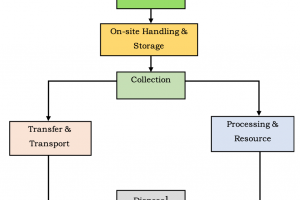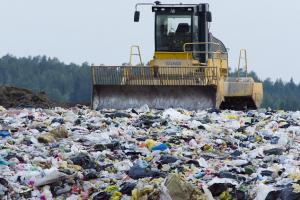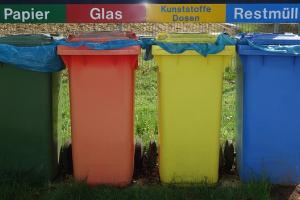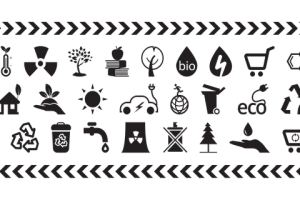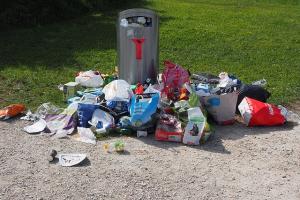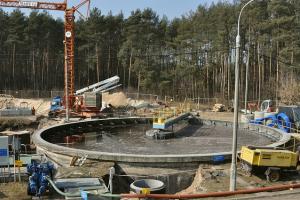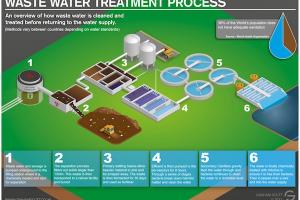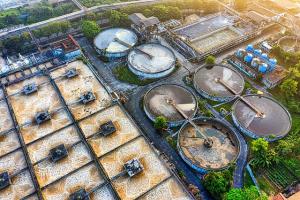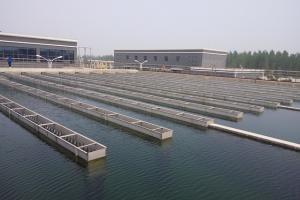Types of WasteWater Treatment Ponds
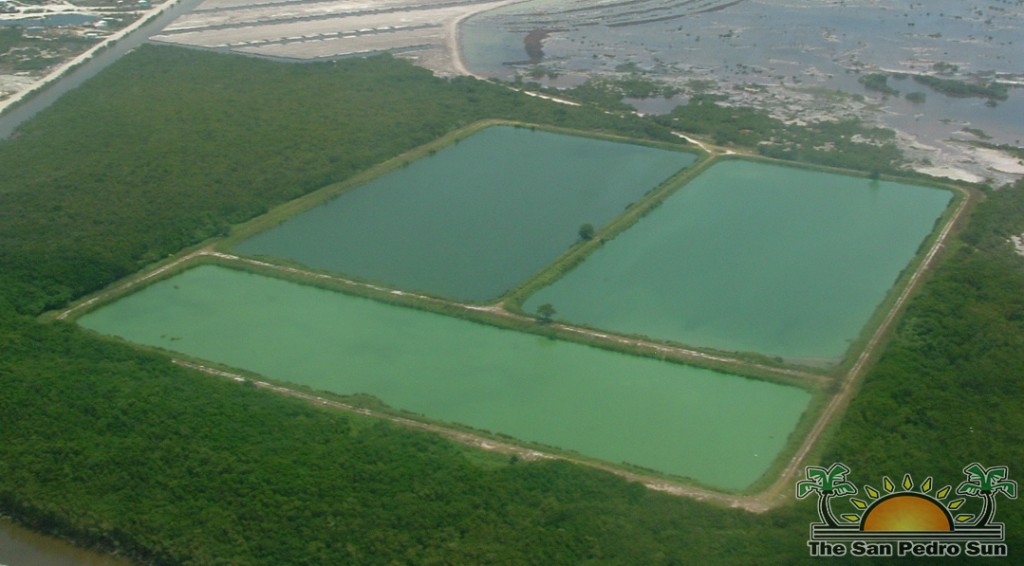
Based upon the range of biological reactions occurring in pounds there are three types of ponds. Aerobic (high-rate) pond in which there is no significant anaerobic or sludge zone. Anaerobic ponds, in which the contribution of any possible aerobic surface layer is small.
Oxidation ponds (so called facultative or aerobic anaerobic pond in which have the whole range of reaction is present. this is predominant type of pond in municipal wn.
Aerobic ponds:
These cause odor problems and so they are not usually employed in municipal installations although they have been used in same countries as pre-treatment ponds in order to reduce the total hand area required. Their main use in the treatment of concentrated industrial wastes in isolated places eqquents from anaerobic system require .aerobic treatment before they are discharged to surface waters.
OXIDATION PONDS (facultative ponds):
Most frequently encountered type much of the volume of these ponds can be either or anaerobic at various times so that growth of facultative organisms which are able to adopt to either condition is favored
High rate aerobic ponds:
Influent waste organic matter is broken down by bacteria and the resulting CO2 is used by algae to synthesize new algal cells by synthesis.
Deign Of waste stabilization ponds:
ponds systems have traditionally been designed on the basis of
1. Avg.liquid detention time ( t=v/q
0
2. areal organic loading i.e organic loading per unit surface area of ponds (g BOD5/m2 - d
0 or both
table 14 - 4
***Where insufficient attention has been paid to the loading rate on the first pond in a system comprising several oxidation ponds in series, severe odor problems can occur if that pond becomes anaerobic hence the design of such systems purely on the basis of average aerial BoD5 Loading Or Total detention time is avedeguate the first pond must not be overloaded
Kinetic -based method of oxidation pond design: le/4 = 1/ 1 + kt
Thus the minimum value of do is do(min) = do sat - doc=9.2-7.3 = 1.9mgk
(which is too low to support even coarse fish life and would be considered seriously polluting)
METHODS OF ANAEROBIC BIOLOGICAL TREATMENTS:
These are suspended growth processes and are used mainly for treating the organic sludge removed from wastewater in (primary sedimentation and in final sedimentation following aerobic biological treatment.
Anaerobic ponds and septic tanks are however used for treating wastewater (rather than sludge).
- Anaerobic pond
- Septic tanks
- Imhouff tanks
- Anaerobic biological treatment.
Anaerobic Ponds:
Anaerobic ponds are heavily loaded open ponds usually 2 to 4cm deep as permanent ponds in municipal waste waste treatment or in industrial wastewater treatment. In either case they reduce the organic load applied to a series of facultative or aerobic ponds which are invariably required to further.
Septic Tanks :
- Septic tanks are story tanks used for treating wastewater from single households or institutions in area where piped sewage is not available.
- Operate essentially as combined sedimentation and anaerobic digestion tanks.
- Well designed tanks should provide a chamber in which reasonably quiescent settling is allowed to occur.
- Solids settle to the bottom of the chamber forming a sludge layer while floats and floatables rise to the surface to form a swum layer which helps to prevent access of oxygen through the liquid surface and also helps to control escape of adowrn.
- These three zones are characteristics of well operated septic tanks
- In common with effluent from other anaerobic processes septic tanks effluent requires further treatment before the most commonly adopted method for on site disposal.




